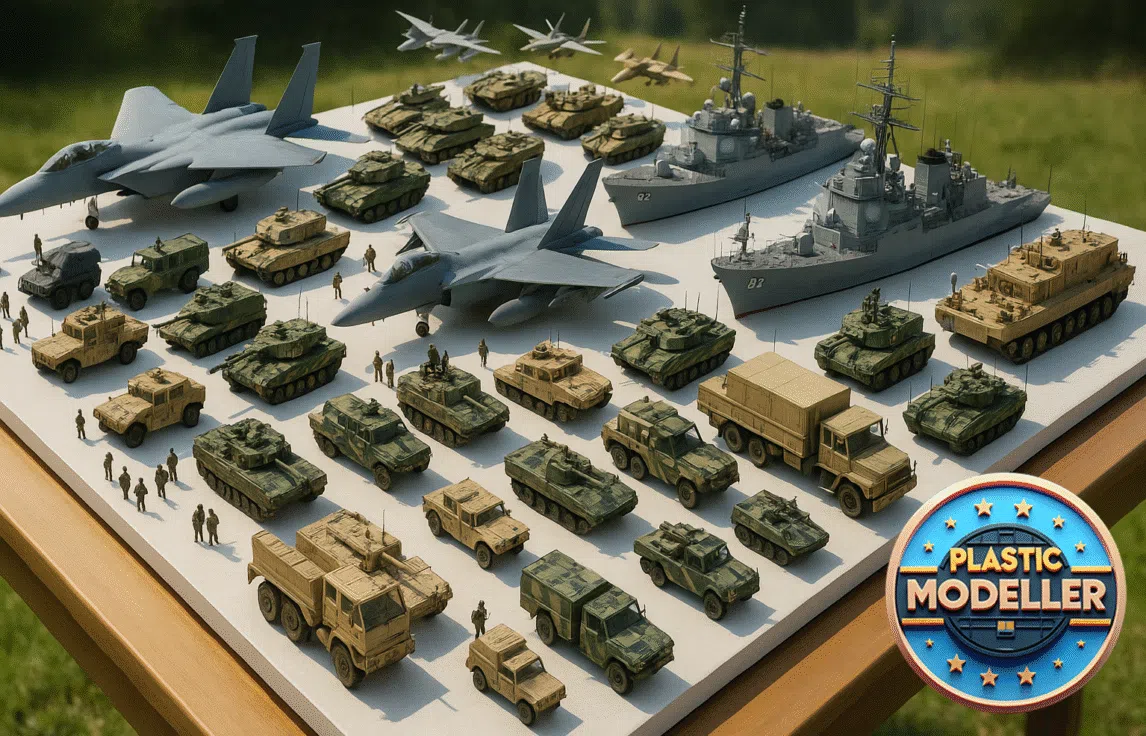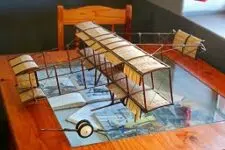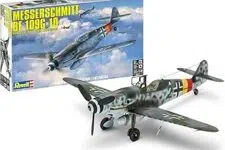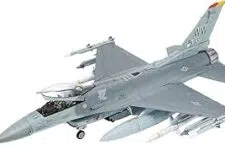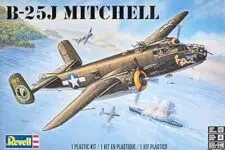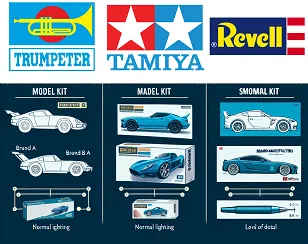
Tamiya’s model kits showcase such brilliant engineering that builders call them “almost bulletproof fit and finish.” These kits surpass the standards set by other brands, making them a strong contender in the Tamiya vs Revell debate.
The modeling world has altered the map substantially. Many manufacturers fall short of ideal standards. Even prominent companies face issues. Revell gets criticism for unclear instructions, particularly in the Tamiya vs Revell comparison. Trumpeter doesn’t deal very well with poor fit and flawed parts.
Model kit brands show vast quality differences. New players like Meng and Takom bring fresh competition. They outperform traditional manufacturers in several categories.
In the ongoing discussion of Tamiya vs Revell, it’s crucial to understand the strengths and weaknesses of each brand.
Our hands-on testing of these model kit brands helps you pick the right one. We looked at build quality, instruction clarity, and value for money. This comparison reveals the brands worth your investment in 2025, including a thorough look at Tamiya vs Revell.
How We Tested These Model Kit Brands: Tamiya vs Revell vs Trumpeter
We created a strict testing protocol to review different model kit brands and their products. This helped us build a complete testing framework that shows what each company can really do.
Our 30-Day Testing Process
The team spent a full month testing kits from each brand. We put in several hours each day to build and review them. Our process looked at how well parts fit together, checked plastic quality, and studied engineering standards. The team also ran full surface preparation tests with both 78% and 99% rubbing alcohol. This helped us understand paint adhesion better.
Quality Testing Criteria
We focused on these most important aspects:
- Build Quality: Looking at mold thickness, flash presence, and part fitment
- Engineering Standards: Checking panel lines, detail levels, and overall kit design
- Instructions Clarity: Looking at how easy assembly guides are to follow
- Value Assessment: Comparing price and quality relationships
The team paid close attention to injection molding quality and how it affects part fit and building experience. Tamiya’s investment in their molding process is a big deal, as it means that parts fit better and cause fewer problems during assembly.
Test Models Selection
We picked matching kit subjects from different brands when possible to keep our comparison fair. The team used Scalemates.com to check kit origins and tooling dates. We chose modern toolings instead of reboxing older kits. This gives you the latest picture of what each manufacturer can do.
Some manufacturers keep their quality steady in all their kits. Others show big differences between kit releases. This methodical approach gave us solid data about each brand’s strong points and possible weaknesses.
Tamiya Model Kits Quality Analysis
A new Tamiya model kit reveals perfectly molded parts that showcase the company’s steadfast dedication to quality. Their latest releases show exceptional engineering standards with crisp, clean castings that have no flash or mold lines.
Build Quality Score
Tamiya’s modern kits prove their commitment to precision manufacturing. The parts fit together with excellent tolerance and create almost invisible seams. Their quality control excels through:
- Clean, precise panel lines
- Flash-free components
- Hidden gluing surfaces
- Precise part alignment
- Double-staggered wheel designs
Advanced injection molding technology helps the company create parts with accurate scale thickness. This attention to detail makes their kits easy to build, which helps newcomers to the hobby.
Instructions Clarity
Tamiya’s instruction manuals serve as industry standards for clarity and organization. Each manual starts with complete paint recommendations and required tools. The step-by-step instructions show clear illustrations with precise color callouts throughout assembly.
The company’s instruction design reflects years of experience, which shows in their clear assembly sequences. This careful attention to documentation helps builders avoid common mistakes.
Quick responses to parts replacement requests make Tamiya’s customer service outstanding. The combination of clear instructions and reliable support leads to successful builds.
Tamiya’s modern kits feature sophisticated engineering like ultra-thin engine cowling panels with neodymium magnets for easy access. These breakthroughs show their ongoing commitment to advancing model kit design while keeping their reputation for superior build quality.
Revell Model Kits Performance
Revell’s model kits come in different quality levels throughout their product line. Their newer releases show great engineering, but some kits just need extra skills to look good.
Parts Fit Assessment
The way parts fit together in Revell kits isn’t always the same. It really depends on how old the molds are. Their latest releases, like the 1/25 Ford Bronco Half Cab, have parts that line up perfectly with minimal flash. In spite of that, older molds need extra work during assembly. We noticed this mainly because of misaligned molds and tricky part connections.
Plastic Quality
The plastic Revell uses has some unique traits. Their material feels softer than other brands, and this makes it easier to sand and modify. When you look at their molding process, you’ll find:
- Mold lines you’ll need to clean up
- Parts with different thicknesses
- Flash showing up on older toolings
- Details that aren’t as sharp as premium brands
Value for Money
Revell markets itself as a budget-friendly choice for model builders. These kits give good value to beginners who want to build their skills. The company keeps prices competitive and offers models of all types, though quality isn’t always consistent.
Revell’s business approach includes repackaging kits from other manufacturers, which creates different quality levels. Builders should look up specific kit reviews before buying because quality changes quite a bit between different releases.
Trumpeter Kits Detailed Review
A look through Trumpeter’s complete catalog shows an interesting pattern in their model kit quality. They use several design teams, which explains why the quality isn’t always the same.
Engineering Standards
Trumpeter loves complex engineering, often using more parts than needed. Their latest kits show this through:
- Advanced molding techniques
- Multiple-part assemblies for simple components
- Detailed surface texturing
- Complex subassemblies
- State-of-the-art tooling implementation
This might look impressive at first glance. Our tests show that extra complexity doesn’t always make better builds. Their A-6E Intruder is a great example of good engineering, but other kits are just too complicated to put together.
Detail Accuracy
The quality of Trumpeter’s detail work changes a lot between different models. Their new aircraft carriers and naval vessels show amazing attention to detail. But some aircraft kits have obvious shape problems, especially in key areas like nose contours and fuselage profiles.
Their designers mostly work from CAD drawings instead of doing complete research. The surface details might look great at first, but accuracy buffs often spot problems when they check against reference materials.
Some kit series do maintain better standards. The 1/32 scale aircraft line has impressive details, even with some fit problems. Their modern armor kits also have great surface textures and panel lines, though they can be overengineered.
Trumpeter excels at making unique subjects that other companies don’t offer. They make kits in ten different aircraft scales and nine warship scales, giving modelers access to rare subjects. This wide range sometimes affects quality consistency across their releases.
Conclusion: Tamiya vs Revell vs Trumpeter
Tamiya leads the industry as the benchmark for model kit quality. Their superior engineering, well-laid-out instructions, and reliable part quality make them the best choice for modelers at any skill level.
Revell sits comfortably in the middle range. Their kits vary in quality, but competitive prices and a diverse selection provide a good entry point for newcomers. Smart builders should check specific kit reviews before buying, especially for reboxed items.
Trumpeter delivers impressive detail but struggles with accuracy at times. Advanced modelers might appreciate their complex engineering and unique subjects. The inconsistent quality means buyers need to choose their kits carefully.
Our tests show that Tamiya remains the top pick when build quality is crucial. Revell works great for beginners or budget projects. Trumpeter excels with their exclusive subjects despite some engineering challenges. While each brand contributes uniquely to the hobby, no manufacturer can match Tamiya’s robust engineering in 2025.
